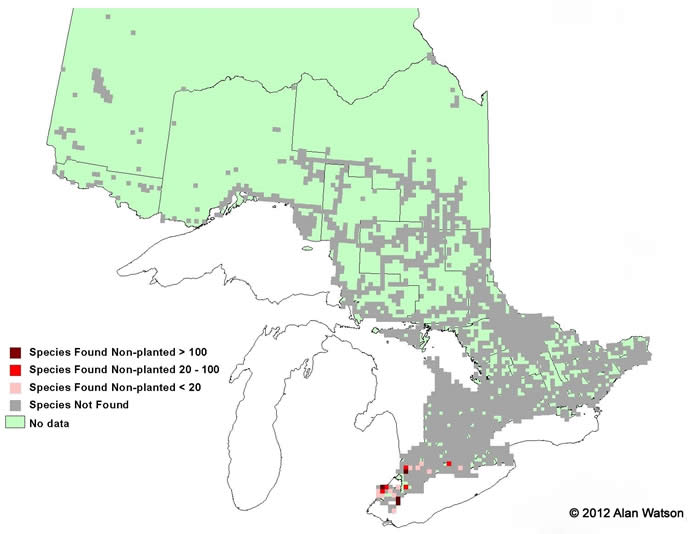Shellbark Hickory - Carya laciniosa
The nuts of the Shellbark Hickory are often eaten raw or baked in pies, similar to pecans. Due to the extreme palatability of the fruit, the Shellbark Hickory relies on animals for seed dispersal, with everything from foxes, deer, muskrats, and even wild turkeys seeking out their fat- and protein-rich fruits. Shellbark Hickory can be difficult to distinguish from Shagback Hickory, but it is generally much larger, in overall size, buds, nuts, and leaves. Shagbark Hickory is also much more common in Ontario.
Uncommon in rich moist soils, even where inundated for a short period of time. The Shellbark Hickory is also rarely a cultivated species.
The Shellbark Hickory Fruit is large, round and somewhat flattened. Its green husk is thick with a large thick shelled nut on the inside.
Twigs light orange and hairy. In regards to the bark of the Shellbark Hickory, the Latin term lacinia means “cut into shreds”, which in this case references the extremely “shaggy” strips of bark that hang from the mature tree.

Ontario Tree Atlas map of non-planted Shellbark Hickory. 1995-1999.
References
Farrar, J.L.. 1995. Trees in Canada. Fitzhenry & Whiteside Ltd. Toronto. ON. 504 pp.
Kershaw, L. 2001. Trees in Ontario: Including tall shrubs. Lone Pine Publishing. Edmonton. AB. 240 pp
Muma, W. 2011. Ontario Trees and Shrubs. [Online] Available: www.ontariotrees.com
OMNR, 2011. Ontario Ministry of Natural Resources: Ontario Tree Atlas. [Online] Available: http://www.mnr.gov.on.ca/en/Business/ClimateChange/2ColumnSubPage/267027.html
OMNR, 2008. Ontario’s Biodiversity: Species at Risk.